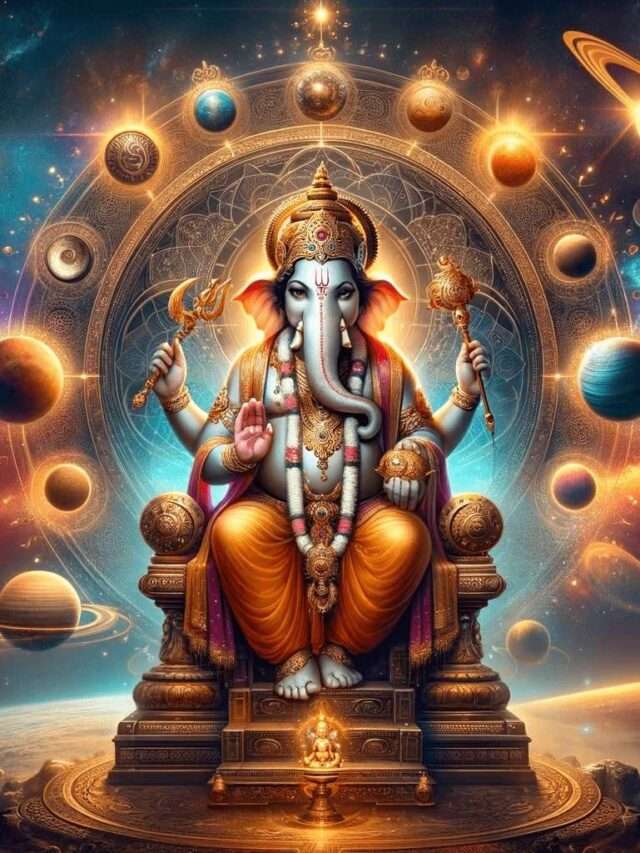Lesson Overview of Bhagavad Gita Chapter 1: The Yoga of Arjuna’s Despondency
In the spiritual panorama of the Bhagavad Gita, Chapter 1 serves as the crucial foundation laying the groundwork for the profound dialogue between the Supreme Lord Krishna and the warrior Arjuna. Swami Ramsukhdas Ji, with his deep insights into the Gita, would guide us to understand this chapter as a representation of the battle within every human heart – the conflict between higher and lower natures, between spiritual aspirations and worldly duties.
The Setting:
The Kurukshetra battlefield is not just a physical locale but a metaphorical field where dharma (righteousness) and adharma (unrighteousness) confront each other. It’s a representation of the human mind where thoughts and choices engage in a perpetual struggle. The Pandavas and Kauravas represent positive and negative tendencies within us.
Dhritarashtra’s Inquiry:
The blind king Dhritarashtra’s question to Sanjaya symbolizes the ignorance of the materialistic mind, inquiring about the outcome of actions rooted in attachment and desire. His blindness is emblematic of spiritual ignorance, leading to attachment to his sons and thus to adharma.
The Conch Shells:
The conch shells, their divine sounds reverberating across the battlefield, signify the call to action – the awakening of conscience urging one to uphold dharma. Each conch, with its unique name and sound, represents different aspects of the divine virtues calling out to the individual soul.
Arjuna’s Dilemma:
Arjuna, the skilled warrior, represents the human soul facing the duty (svadharma) versus the worldly attachments. His compassion, while noble, is tinged with emotional attachment, clouding his judgment and duty as a warrior. This confusion leads to his despondency, signifying the turmoil faced when righteousness clashes with personal emotions and attachments.
The Crisis of Morality:
Arjuna’s moral crisis upon seeing his kinsmen in opposition reflects the inner turmoil that precedes spiritual awakening. His reluctance to fight is not cowardice but a profound moral and ethical debate about the righteousness of killing one’s kin, even in the pursuit of justice.
The Symptoms of Inner Conflict:
The physical and psychological symptoms Arjuna experiences – quivering limbs, dry mouth, trembling body, and swirling mind – are the outer manifestations of an inner spiritual and ethical conflict. This conflict arises from the recognition of the transient nature of material achievements and the eternal consequences of actions.
The Deeper Aspect:
Swami Ramsukhdas Ji emphasize that the true battle is within. The external war is but a mirror to the internal strife. Arjuna’s chariot, positioned between the two armies, symbolizes the state of balance and the crossroads every seeker faces – the choice between spiritual awakening and remaining in spiritual ignorance.
The Prelude to Revelation:
Arjuna’s despondency sets the stage for the teachings of Lord Krishna. It is only when we recognize the limitations of our understanding and confront our deepest fears and doubts that we can open ourselves to divine wisdom. The chapter concludes with Arjuna surrendering to his despair, setting the stage for the divine discourse that follows.
In this way, Chapter 1 of the Bhagavad Gita is not merely about a historical battle but is about the perennial struggle between good and evil, duty and desire, wisdom and ignorance. It teaches us that the path of righteousness, though fraught with challenges, leads to ultimate liberation and eternal peace. The reader is thus invited to reflect upon their own life, recognize their inner Arjuna, and prepare for the wisdom of Krishna that unfolds in the chapters ahead.
Mind Map for Bhagavad Gita Chapter 1

- Bhagavad-gītā Chapter 1: The chapter is about setting the scene for the dialogue between Lord Krishna and Arjuna at the battlefield of Kurukshetra.
- Dhritarashtra’s Inquiry: The chapter opens with King Dhritarashtra’s inquiry to Sanjaya about the state of the battle between his sons (the Kauravas) and the Pandavas.
- Signs of Defeat and Victory:
- Defeat: There is an ominous sign of defeat for the Kauravas, as the earth and sky vibrate at the sound of conch shells, indicating celestial support for the Pandavas.
- Victory: The presence of Lord Madhava (Krishna) and the transcendent conch shells blown by the Pandava warriors, including Arjuna’s Hanuman-flagged chariot, signify impending victory for the Pandavas.
- Allies:
- Dhritarashtra’s side: Allies like Dronacharya, Bhishma, Karna, Kripacharya, Ashwatthama, Bhurishrava, Vikarna, and others are mentioned.
- Pandavas’ side: Allies include Drishtadyumna, Virata, Satyaki, Dhrupad, the sons of Draupadi, Chekitana, King of Kashi, Purujit, Kuntibhoja, Shaibya, Yudhamanyu, and Uttamauja.
- Arjuna’s Perspective:
- Arjuna experiences symptoms of lamentation such as limbs quivering, dry mouth, whole body trembling, hair standing on end, bow slipping from hand, skin burning, inability to stand, and a whirling mind.
- He finds reasons not to fight, such as compassion for relatives, loss of enjoyment due to the death of relatives, fear of sinful reactions, and the destruction of family and community traditions.
- Consequences of the War:
- Arjuna’s concerns highlight the destruction of community projects, abandonment of offerings to forefathers, women being polluted, leading to an increase in irreligion and an unwanted population, ultimately resulting in a hellish life for those responsible for the destruction of family traditions.
- Conch Shells Blown:
- The conch shells blown by the Pandavas, including Krishna’s Panchajanya and Arjuna’s Devadatta, signal the commencement of battle and the determination of the Pandavas to fight for dharma (righteousness).
- Arjuna’s Response:
- Despite the signs of victory, Arjuna is overwhelmed by doubt and sorrow, leading to his decision not to fight, which is the beginning of the spiritual conversation in the subsequent chapters.


